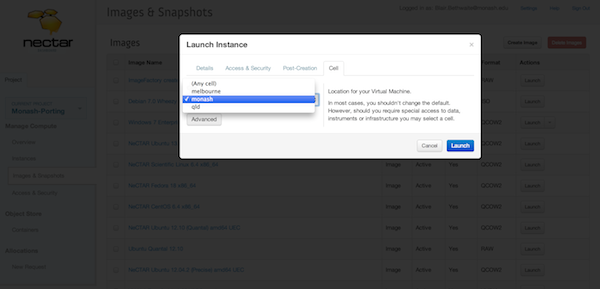I mentioned in the last post that the Monash NeCTAR node is using local direct-attached disk for instance ephemeral storage, but I forgot to expand on the caveats, so here goes:
It’s important to note that this means loss or failure of a hypervisor/compute-node could mean loss of the ephemeral storage of instances on that node at the time, depending on the severity of the failure. In many cases we’ll be able to restart and recover these instances later (of course memory state is gone), but how long that will take depends on the failure, so ephemeral storage availability in the face of hardware issues is unpredictable versus other NeCTAR nodes using shared storage who can (given available time and resources) more readily attempt recovery. However, this is cloud computing roughly mimicking the model pioneered by EC2, so really, just don’t rely on ephemeral storage to hold anything you can’t easily recompute or aren’t readily backing up to persistent storage – and go backup your laptop while you’re thinking about it!
Persistent block storage (aka volumes) will make an appearance on the Monash node soon (hopefully a generally available pre-production service before end of July). University of Melbourne should have theirs in production within a few weeks. So, stay tuned…
